Home Lighting Tips and Guide
With great home lighting tips, you can make a plain space look great and a great space look fantastic! Light affects how we perceive spaces and the items within them. A good lighting plan should create a cosy, inviting space and add sparkle to treasured art work and furnishings.
There are basically 2 types of lights to consider in a lighting plan; natural and electric light.
Home Lighting Tips with Natural Light
First, let’s see how we can optimize the use of natural light:
-
Light dressing - To allow light to flow into a room without interruption, remove secondary glazings on the window since they absorb light. You should also replace heavy curtains with blinds, window shutters or light drapes.

Simple reflection – Placing a mirror near or opposite the window not only makes the room seem larger, it also reflects light around the room, making it brighter.
Floored – Choosing the right flooring also determines the room’s brightness. Carpets will absorb light while polished marble or glossy painted floor reflects it.

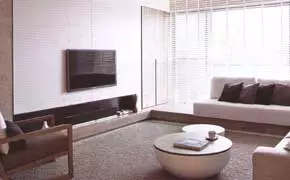
Colored – The closer the color is to white, the more reflective it is. Thus pale shades of blue, lilac etc on the walls and ceiling will make the room look brighter while color like black, orange, brown etc will absorb light and make the room appear smaller and darker.
Home Lighting Tips with Electric Light
To help you communicate your home lighting plan, here’s a glossary of common terms used by interior designers: General lighting - This would be your overall light for general purpose. The most commonly seen ones are ceiling-mounted fluorescent rings or tubes in plastic casings.Florescent lights do a great job of lighting up large areas but the white light emitted also makes everything look bland and lifeless.Now, more homeowners are turning to halogen lights, which can be dimmed and gives off a softer, more flattering glow.
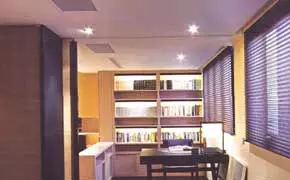
Accent lighting - Create interesting shadows and contrast with accent lights like spotlights, which help to draw attention to display items or artwork with their directional beam.Highlight a designer chair, treasured hobby collection or simply create a light show by designing pools of overlapping light along a hallway or long wall.
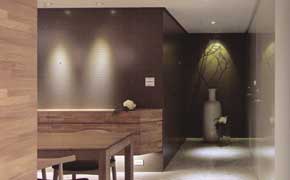

Decorative Lighting - Their sole purpose is not illumination but decoration. Decorative lights like dramatic chandeliers and colorful silk lanterns will look good even when unlit. Sometimes a striking decorative light or a group of them can even be used as the genesis of a decor scheme.
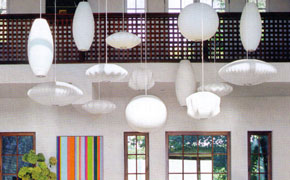
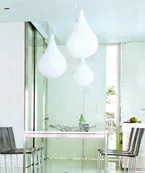
-
Task Lighting - As the name suggests, these lights help you accomplish tasks like studying, reading, and sewing, while minimizing eye strains.
Desk lamps with adjustable arms are best for positioning lights exactly where you need them, while task lighting is crucial in the kitchen to prevent accidents from happening.
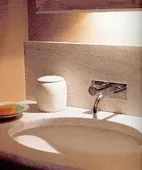
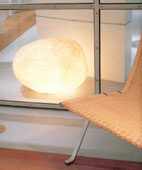
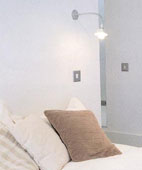
The key to good lighting is layering. Using just one light source for the whole space might be the easy way out, but it won’t be able to bring your interiors to life. Know the different types of lights and the kind of illumination they provide. Then use a mix to create a captivating ambience, depending on the function of the space.
Dazzled by the variety of lighting choices out there? Here’s a room-by-room guide to home lighting tips that won’t leave you in the dark. Your plan starts here:
Living room lighting tips
Dining room lighting tips
Kitchen lighting tips
Bedroom lighting tips
Bathroom lighting tips
Lighting trend
Return to the top of home lighting tips
Like to know more? Click on the following:
Door | Flooring | Walls |
Living Room | Dining Room | Bedroom | Kitchen | Bathroom |
Space-organization | Home Lighting | Home Decor Fabric |
Unique Home Decor Ideas
|














